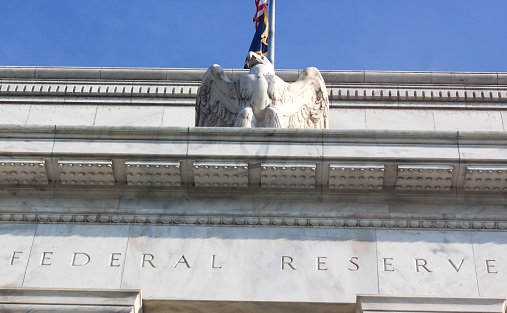The Fed turned decisively more hawkish this week, despite rising risks to the global economic outlook amid the emergence of the new Omicron variant of Covid-19. Fed Chair Jerome Powell appeared on Tuesday and Wednesday before the House and Senate to testify on the Fed’s policy and conceded that the new variant is a risk, but that it was too early to definitely say how their forecasts would be affected. However, when speaking on US economic growth and the state of the labour market, he did not mince his words and was unequivocally bullish, whilst also sounding significantly more concerned about the risk of a more prolonged inflation overshoot than he did at the last Fed meeting.
It’s time to retire the word “transitory” to describe inflationary pressures, he hawkishly said. Moreover, Powell opened the to a faster conclusion of the taper of the Fed’s asset purchase programme. It would be appropriate for the FOMC to discuss ending the programme a few months earlier, he said to Congress. In the subsequent days, further Fed speakers came out of the woodworks. Bostic, Barkin and Daly all largely stuck to Fed Chair Powell’s hawkishly revamped script, whilst Bullard, one of the more vocal hawks on the FOMC (and is a voter in 2022), was out with even more hawkish than usual rhetoric on Friday.
The Fed could look at raising interest rates even before it has completed its QE taper, he said, adding that the taper should end by March. Bullard added that he wanted to get to the point soon where the Fed was going into “live” meetings (i.e. meaning rate hikes are a possibility). Note that in 2021, Bullard has been substantially ahead of the curve compared to other Fed member, responding more quickly to the rapid rise in the YoY inflation rate and calling for a hawkish turn as far back as early summer.
The more hawkish line adopted by Fed members this week was endorsed by a string of strong US macro data releases. Yes, the headline NFP number released today was substantially weaker than expected at 210K (versus forecasts for 550K), but the unemployment rate dropped sharply to 4.2% from 4.6% in October, despite a pick-up in the participation rate to 61.8% from 61.6% to a post-pandemic high. Bullard said he expects the headline NFP number to be revised higher next month and analysts noted that without seasonal adjustments, today’s NFP number was above 700K. Elsewhere, ISM Services PMI surprisingly hit a fresh record high and ISM manufacturing PMI remained very strong. All other labour market indicators (IJC, ADP, ISM employment subindices) pointed at a tight, strong labour market.
So Powell and the rest of the Fed members are right in their assessment that, right now, with growth and the labour market so strong and inflation running way above target, the time has come to reduce stimulus at an accelerated pace. But what about if Omicron comes along and slows growth. Well Fed members now seem more concerned about the potential pro-inflationary impact that further lockdowns/restrictions to global supply chains would have, rather than being concerned about a slowdown in already very hot growth.
What this means for markets
US equities don’t like it. US equities have been choppy all week but are ultimately ending things on the back foot with the S&P 500 below 4550 and down about 1.2% on the week at the time of writing. That marks a more than 4.0% drop from the record levels set last week close to 4750. Equities had been performing strongly before Omicron came on the scene, content with the fact that the Fed might be heading towards tighter policy so long as underlying growth momentum in the US economy remained favourable and the long-term outlook for interest rates didn’t become too hawkish.
But now that Omicron is here, there are doubts about the strength of US growth heading into 2022. But, unlike in the past, the Fed isn’t going to be there to save the day with rate cuts/dovishness, as inflation is too high and unlikely to drop back to the Fed’s 2.0% target any time soon. Reduced growth expectations coupled with a Fed that wants to tighten policy anyway is a pretty toxic combination for stocks.
But it remains far too soon to say whether or not Omicron will have a severely negative impact on US (and global) growth in 2022. If the symptoms caused by the virus are much less severe than other variants, this would actually be a blessing. The world could reach herd immunity fairly quickly with Omicron without too much loss of livelihood, thus protecting against the nastier variants like delta. If this is going to be the case (as early data shows is a very good possibility), then stocks could soon be roaring back to fresh record levels. One positive to keep an eye on is that supply chains are showing very early signs of improving, which would remove another impediment to US growth and corporate earnings.




